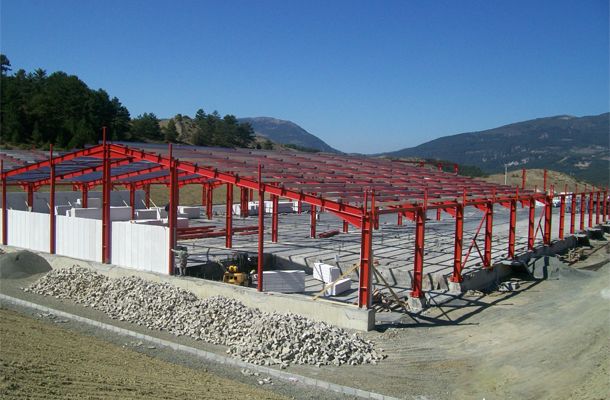Future-focused hatchery construction
Tags: Hatchery management | Whitepaper
, 20 March 2011

Sustainability is an important feature of contemporary building design, often reflected in building regulations – and very achievable, given the many, varied material, design, energy and equipment solutions that are currently available.
A hatchery building is made up of various construction layers, and therefore likely to use a combination of materials in the bearing structure, roof covering and façade cladding.
Selecting building materials
Early in the design process, materials are selected for each of these layers, based on their design, operating life, strength, appearance, fire safety, sustainability, speed of construction and cost.
Bearing Structure
Various materials are suitable for the bearing structure. These include concrete, steel, wood and mixed construction materials. Steel is often chosen because it is sustainable and strong yet light-weight, and it offers variety and rapid construction speeds.
Portal truss frames (with hinged column base joints and frameworks with hinged or wedged column bases) are highly recommended for the bearing structure. Portal frames possess adequate stability, requiring only perpendicular connections to deliver excellent stability and structural integrity. Where a larger span is required, truss beams are a good solution.
Roof Covering
Minimal energy loss, to retain constant temperature and maximum climate control inside the building, is the aim when choosing a roof covering. Insulation, proper ventilation and the erection of the roof structure are important considerations when deciding on roofing materials, as is tolerance to natural, external stresses, such as snow, rain or wind.
Options for the roof covering include profile sheets with separate insulation sheets, steel roofing sheets with anti-condensation lining, corrugated fibre cement sheets, uninsulated roof panels and sandwich panels.
Sandwich panels and profile sheeting with separate insulation are well suited for this purpose. These are fixed to the outside of the bearing structure, with the insulation sheets installed on the inside.
Façade Cladding
Insulation and aesthetics are the two main considerations when choosing a façade cladding system. While masonry, prefabricated concrete panels and steel sheeting are often popular choices, steel cladding (sandwich panels) often yields the best results.
Covering façades and roofs with the same panel types is not advised, as differences in slope and load mean differing requirements in detailing, fastening and joins.
Ideally, façade panels are installed on the inside of the bearing structure, for ease of cleaning and hygiene. Take care to check the join between the façade cladding and the floor, to prevent the accumulation of dirt and water. Floor skirting may provide a good solution if this is a problem.
Sandwich panels are often recommended for hatchery construction because they offer many advantages, including:
- Core materials and skins work together structurally
- Sandwich panels are available in all forms and types of material
- Prefabricated forms deliver short construction times and reduce costs
- Both sides are finished
- Outstanding structural characteristics
- Can be assembled and disassembled in virtually all weather conditions
- Hidden fastenings can be used to ensure that screw heads are invisible
- Inherent rigidity means fewer fastening points
- Extremely high thermal insulation
- Lightweight
- Large spans require minimal backing structure
- Fire-resistant filling
Advice
- Aim for simple structural design for the main bearing structure, with a limited number of components and joins.
- Expect good information on the choice of materials from the architect / construction company.
- Consider delivery times when choosing materials. Sandwich panels are manufactured to the required specification.
- Clad roofs and façades with different panels: using the same materials for both is not advised.
- Investigate the subsidies that may be available when using sustainable materials.
Written by Férenc Elshof
Project Manager
I welcome your feedback on this article - and if you require any additional information, please don't hesitate to contact me.